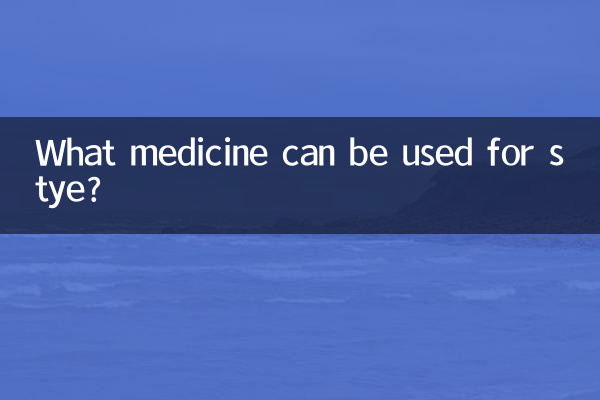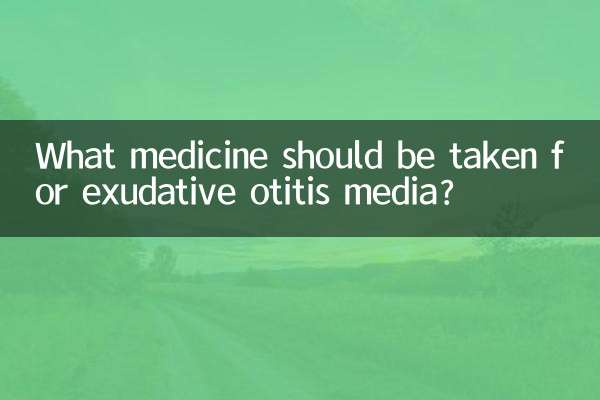What medicine can be used for stye?
Styes (colloquially known as "pinholes") are a common eye condition usually caused by a bacterial infection that manifests as redness, pain, and pustules at the edges of the eyelids. Recently, the treatment of stye has become one of the hot topics, and many patients are concerned about how to quickly relieve symptoms. The following is a detailed guide on medication for stye, compiled based on the hot content on the Internet in the past 10 days.
1. Common symptoms of styes

The main symptoms of a stye include:
| symptom | describe |
|---|---|
| Redness and swelling | The eyelids are locally red and swollen, with induration when touched |
| pain | There is tenderness in the affected area, which may affect opening of the eyes in severe cases. |
| pustule | In the later stage, yellow pus spots may appear and may ulcerate on their own. |
2. Commonly used drugs for styes
According to the popular discussions and medical advice on the Internet in the past 10 days, the following are commonly used drugs to treat stye:
| drug type | Drug name | effect | How to use |
|---|---|---|---|
| antibiotic eye ointment | Erythromycin eye ointment, chlortetracycline eye ointment | Inhibit bacterial growth and reduce infection | Apply to the affected area 2-3 times a day |
| antibiotic eye drops | Levofloxacin eye drops, tobramycin eye drops | Act directly on the infected site | 3-4 times a day, 1-2 drops each time |
| oral antibiotics | amoxicillin, cephalosporins | Systemic medication for severe infections | Take as directed by your doctor |
| anti-inflammatories | Ibuprofen, acetaminophen | Relieve pain and inflammation | Take according to instructions |
3. Home care methods for styes
In addition to drug treatment, home care is also an important way to relieve styes:
| Nursing methods | Operation steps | Things to note |
|---|---|---|
| Hot compress | Soak a clean towel with warm water and apply to the affected area for 10-15 minutes | 3-4 times a day to avoid burns |
| clean | Clean the affected area with normal saline or special eye cleaning solution | Be gentle and avoid squeezing |
| avoid wearing makeup | Stop using eyeliner, mascara and other cosmetics | Prevent further bacterial infection |
4. When do you need medical treatment?
If the following situations occur, it is recommended to seek medical treatment promptly:
| Condition | possible risks |
|---|---|
| Symptoms persist for more than a week | Infection may worsen or spread |
| Vision affected | May develop more serious eye disease |
| Fever or general discomfort | The bacterial infection may have spread throughout the body |
5. Recent popular questions and answers
Based on the hot discussions on the Internet in the past 10 days, the following are the issues that patients are most concerned about:
| question | answer |
|---|---|
| Can a stye be popped? | It is not recommended to squeeze it open by yourself as it may cause the infection to spread. |
| What medicine is used for stye in children? | Children need to use antibiotic eye ointment or eye drops under the guidance of a doctor. |
| Is stye contagious? | It is usually not directly contagious, but personal hygiene needs to be observed. |
6. Tips to prevent styes
Prevention is better than cure, here are some effective ways to prevent styes:
| Precautions | Specific practices |
|---|---|
| Keep your eyes clean | Wash your hands frequently and avoid rubbing your eyes with dirty hands |
| Avoid sharing cosmetics | Do not share eyeliner, mascara, etc. with others |
| Enhance immunity | Eat a balanced diet and get enough sleep |
Although styes are common, recovery from styes is usually rapid with the right medication and care. If symptoms persist or worsen, it is important to seek medical attention promptly to avoid delays in treatment.

check the details

check the details